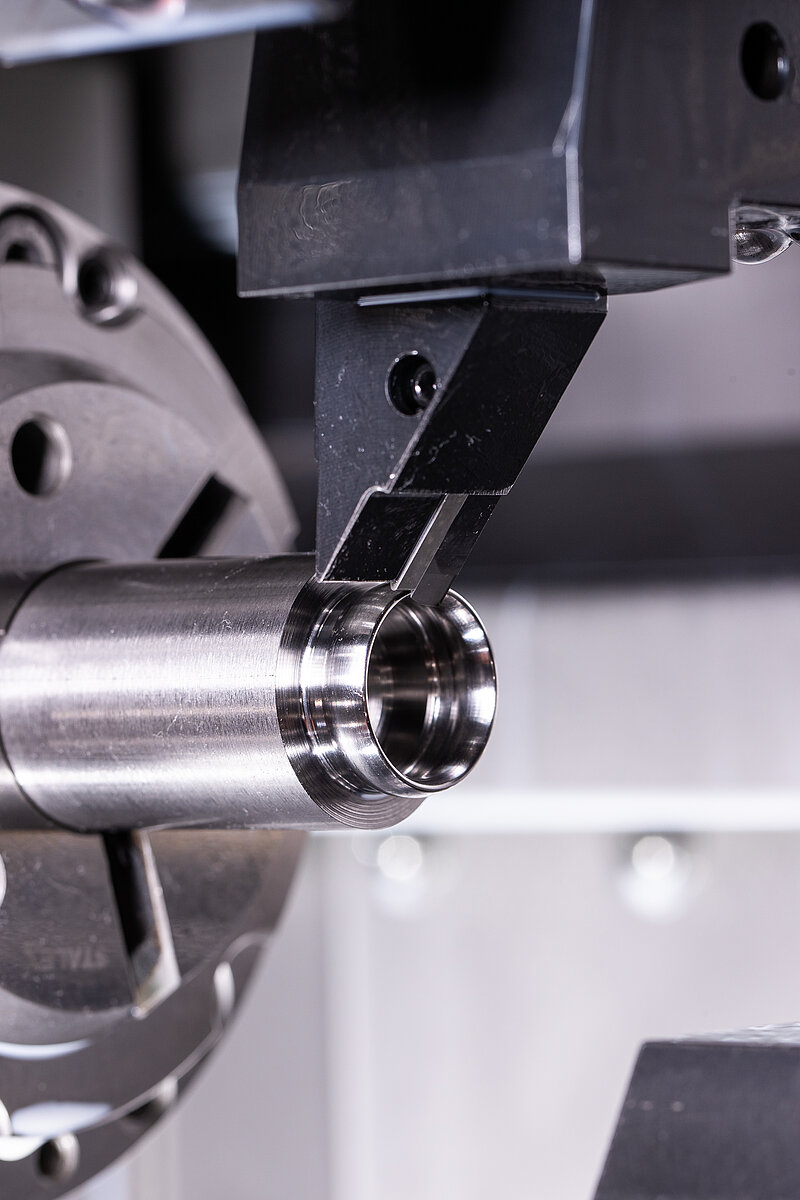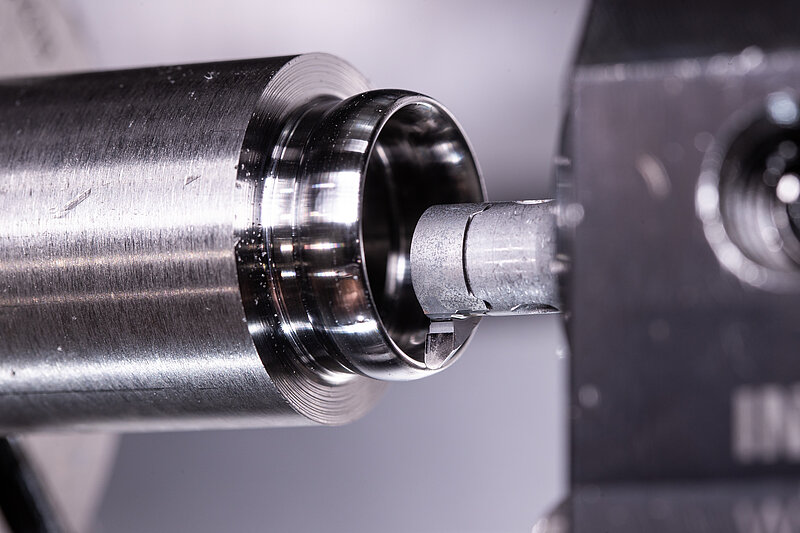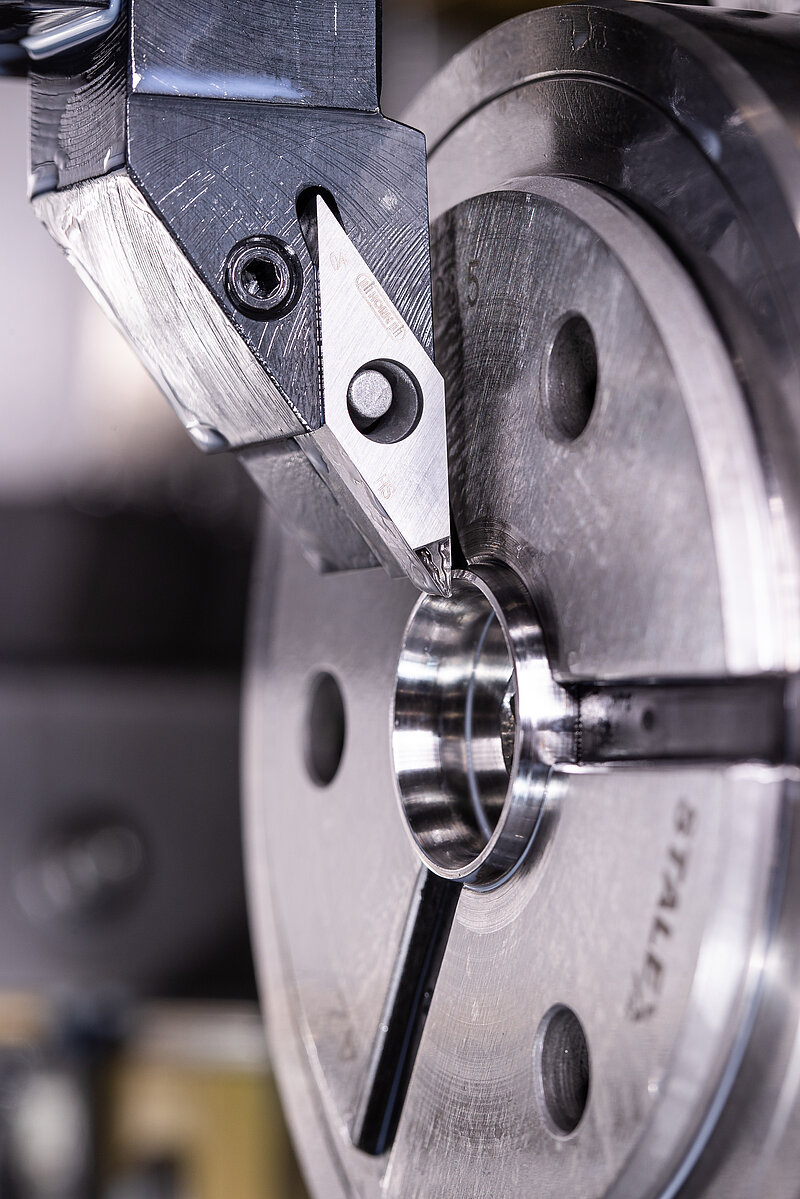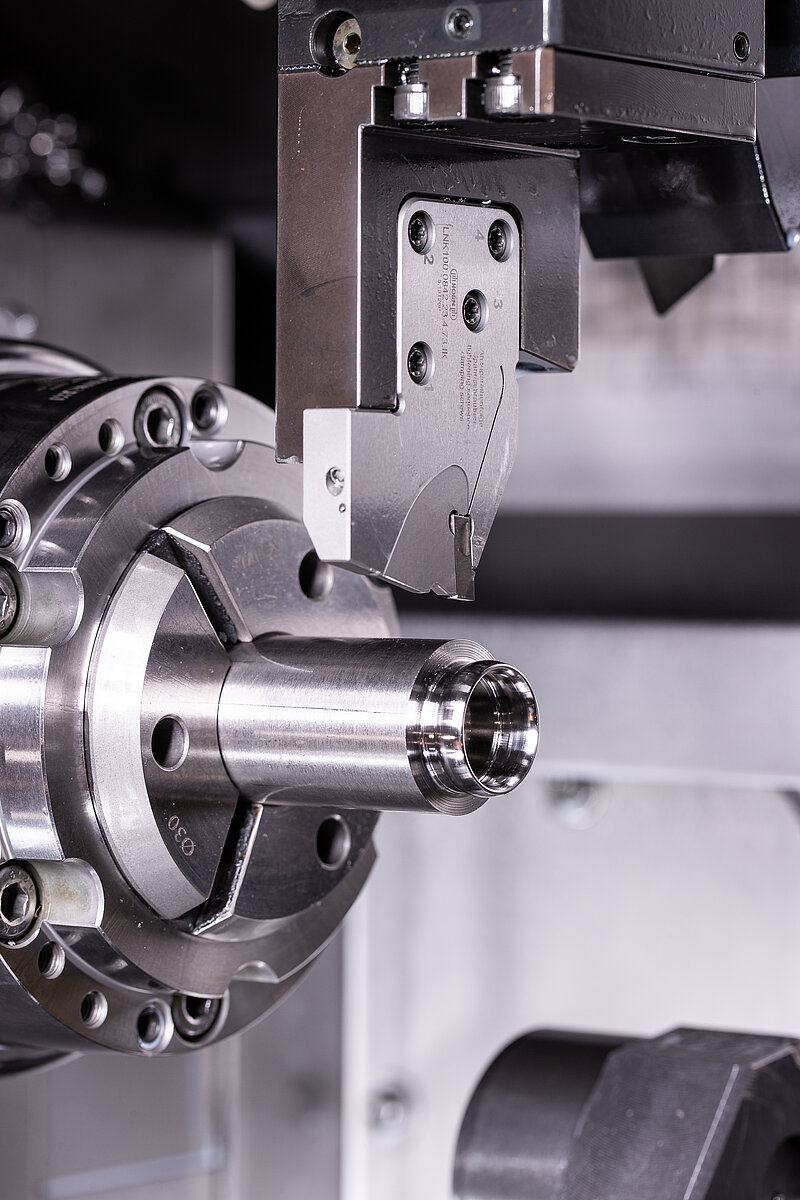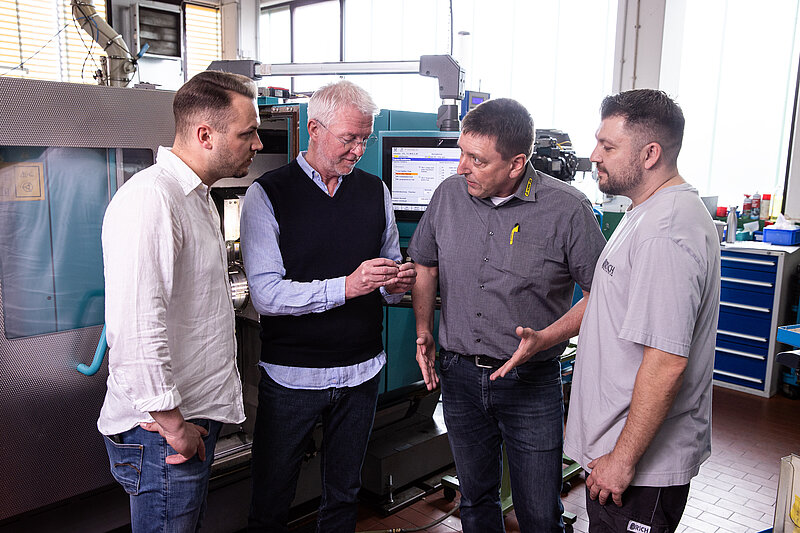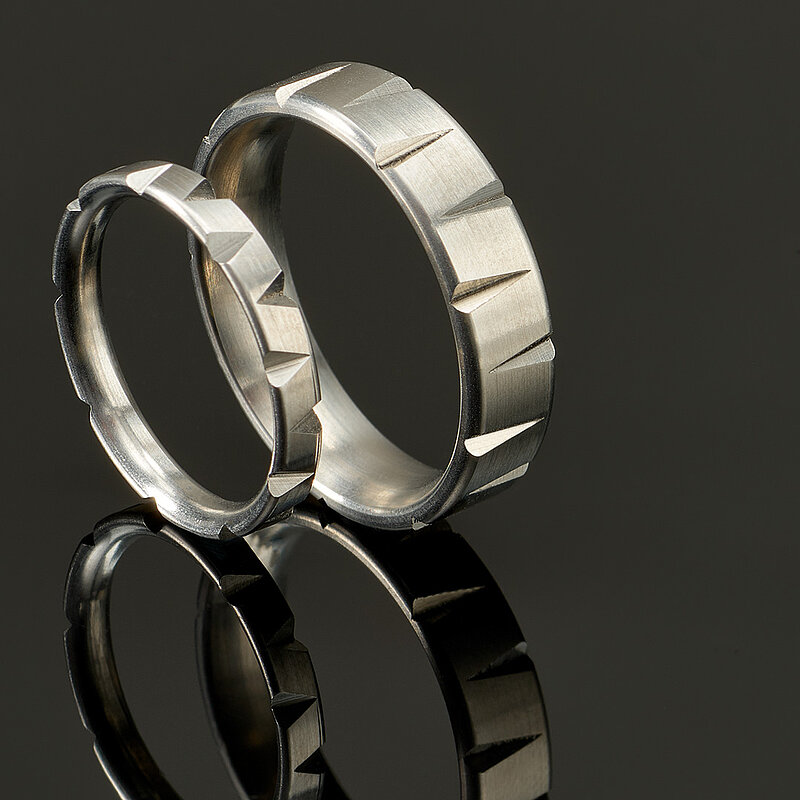Precision and elegance
Titanium, design, and micron-level precision.
Where high-precision components are usually produced in series, high-quality titanium rings have also been emerging from the turning centers since 2021. The company RICH Praezision, led by managing directors Wolfgang and Gottfried Rich, has opened up a new line of business with its own collection of titanium rings.
Titanium, design, and micron-level precision
Since 2021, alongside the serial production of high-precision components, premium titanium rings have also been emerging from the turning centers of RICH Praezision. With the launch of their own collection of titanium rings, managing directors Wolfgang and Gottfried Rich have opened up a new business segment.
RICH.STIL: Precision meets elegance
Under the RICH.STIL brand, led by Alexander Rich, son of Wolfgang Rich, the company aims to shake up the market with meticulously crafted pieces of jewelry made from this high-tech material. For production, the team relies on tools from Paul Horn GmbH, including tools for high-gloss machining.
“We’ve wanted to create our own product for many years. In 2021, we initiated several project groups with the clear goal of manufacturing everything in-house on our own machines,” explains Wolfgang Rich. After numerous discussions, the decision was made to focus on ring production. “It fit well into our workflow and involved minimal retooling,” adds Gottfried Rich. The project quickly became a passion, with the team committed to the highest quality standards. The ring designs were developed not only in-house but also in collaboration with a fashion designer and a goldsmith brought in by Wolfgang Rich. All RICH.STIL rings are made from pure titanium. “The material is completely harmless and suitable even for people with allergies,” says Alexander Rich.
Diamond settings and customization
Soon, customers will be able to design and order customized rings—including engravings—directly via RICH.STIL’s online shop. Diamond settings will also be offered in cooperation with a goldsmith. Other stones like zircon are not suitable due to the hardness of titanium. “Titanium is much harder and more brittle than gold or silver. Only real diamonds are suitable for setting,” explains Wolfgang Rich.
Machining challenges and solutions
Titanium behaves differently from steel during machining. Its tendency to work-harden and its combination of elasticity and tensile strength present challenges. Excessive friction can cause tool wear, so optimal cutting parameters, chip control, tool sharpness, and heat resistance are essential.
To contour-turn the rings, RICH uses diamond-tipped tools from Horn—specifically PCD-tipped ISO inserts. Their laser-cut chipbreaker geometry ensures process reliability when machining the long-chipping material. The diamond's excellent sliding properties prevent built-up edges, and the hardness of the cutting material ensures long tool life. “With Horn tools, we've been able to manage common titanium machining issues like chip control very well,” says production manager Wolfram Stiefel. An emulsion from the VDI holder is used for cooling.
Mirror finishes with MKD tools
Finishing the inner contour of the rings is done using a diamond-tipped boring tool of the “Mini” type. Unlike PCD, this insert features a monocrystalline diamond (MKD) cutting edge. “The inner surface of the ring is critical for wearing comfort,” says Wolfgang Rich. To reduce or eliminate the need for polishing, high-gloss turning is used. This process achieves mirror-like surface finishes in the nanometer range on non-ferrous metals. While high-gloss turning pure titanium is challenging, the MKD tool reduces polishing time from around five minutes to under one minute by eliminating tool marks. “There are no turning grooves on the surface,” notes Alexander Rich.
Craftsmanship in tool finishing
The quality of the cutting edge is crucial for mirror finishes. Finishing an MKD edge is a form of craftsmanship—similar to polishing a gemstone. The edge is shaped by hand using precision tools on air-bearing granite-based grinding tables. Inspection is done under a microscope at 200x magnification, where the cutting edge must be completely free of notches. The resulting edge has a radius of just 0.0002 mm. For creating MKD ball nose end mills used in high-gloss machining, Horn developed a specialized grinding machine capable of producing even the smallest radii reliably.
High-purity synthetic diamonds
Horn equips its MKD tools with high-purity MCC diamonds, grown through the CVD process. Methane and other gases serve as the carbon source, allowing for diamonds with clear to slightly brownish color—depending on thickness—and long edge lengths, such as 30 mm. Previously, natural diamonds were required for such applications, but they were limited by price, availability, and natural inclusions.
A partnership built on trust
“The diversity of Horn’s portfolio and the expertise of their technicians constantly confirm why we’ve relied on Horn tools for over 30 years,” says Wolfgang Rich. “Whether for our daily contract manufacturing work or our titanium ring collection, Horn has always had the right tooling solution.”
Source | Paul Horn GmbH
![[Translate to English:] InDiamond.world](/fileadmin/_processed_/a/1/csm_InDiamond_Logo_2021_1fb017de30.png)
